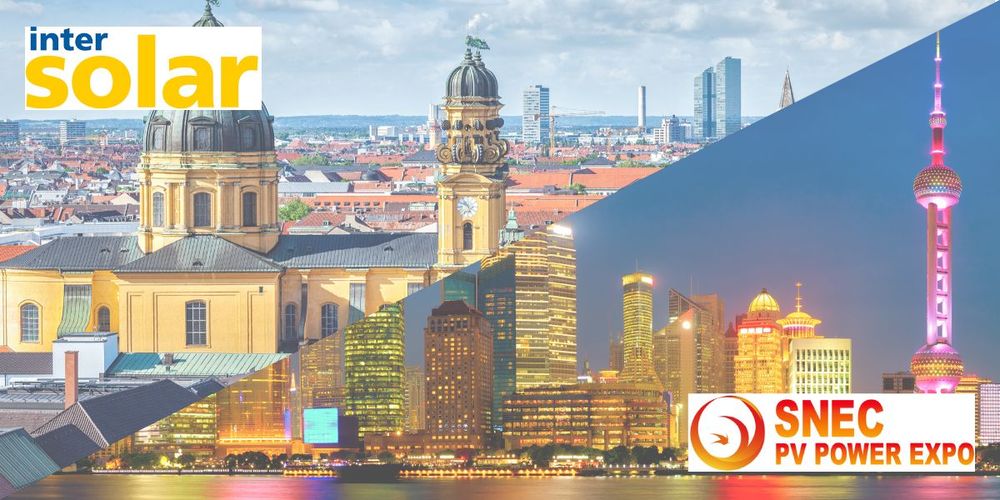Back from the exhibitions: the upcoming trends.
Having just returned from SNEC, an industrial tour of China and Intersolar, Synapsun has identified the challenges ahead for the PV industry and the French mark.
1/ The increase in capacity of the N-Type TOPCon
Which will eventually cannibalise the P-Type PERC. Synapsun needs to manage this transition as effectively as possible. We must not rush our customers towards this new technology if it is too early. TOPCon still presents a number of challenges and currently has insufficient capacity to meet the growing needs of the market. Above all, our customers need supply reliability. Consequently, we recommend that they 'try out' N-Type, without abandoning P-Type. 70% N-Type / 30% P-Type in 2023 and the opposite from the second half of 2024 seems reasonable to us to accompany the growing power of TOPCon.
2/ The latest evolution in wafer sizes and therefore in modules.
7 different wafer sizes have been observed. This will inevitably lead to a multitude of new module sizes.
The aim of these developments is to make the most of the increasing diameter of ingots, but also to maximise the filling of containers to reduce the impact of transport.
Of course, each manufacturer is seeking to impose its own design.
We have to be ready to support our customer's development/BE teams, who will have to redesign their PV plants. We also need to anticipate the certification of these new modules with the mounting systems. It is the module lengths and as a result the power ratings that will change. The widths remain unchanged.
3/ Is the industry ready to deliver projects requiring PPE2 SCAs?
It should be remembered that the PPE2 SCAs (simplified carbon assessments) will be required from October onwards for the first S21 projects for which the request for connection has been made after 1 April 2023, and also for the commissioning of projects that have won the PPE2 period 4 and period 5 calls for tenders.
These ECS PPE2 projects will require the LCAs (life cycle assessments) to be updated.
However, the industry is undergoing radical change.
Have the new silicon ingot and wafer production units had their LCAs updated and submitted to ADEME in time? Will they be able to produce PPE2 LCAs with the required scores?
Are the plants manufacturing the new wafer formats and technologies the same as those currently certified? If not, the LCAs will be back to square one. Is the timing for these new LCAs, critical reviews, ADEME filing and ECS certification compatible with our customer's project connection deadlines?
Manufacturers are not going to change their growth plans just to satisfy the French market. It is therefore essential to anticipate these points and guide our customers towards the right solutions.
4/ New entrants in the PV industry.
Solar energy is booming. A huge amount of capital is flowing into the industry.
New entrants have made their way into the top 10 by building production capacities of several tens of GW in the space of a few years. These new players have no P-Type PERC production tools to absorb/ depreciate and are launching into the new N-Type technologies in force.
Some upstream leaders are also investing massively in downstream equipment, driven by the super-profits generated by the surge in silicon prices over the past few years.
Budgets go into overdrive, IPOs are multiplying and the hunt is on for experts in the technical HR world. Competition is fierce. This is accelerating progress and enabling Chinese industry to widen the already colossal gap with its Western rivals.
5/New technologies upcoming.
TopCon is already here in 2023, while back-contact and heterojunction will become more widespread in 2024. Perovskite, combined with crystalline for tandem cells, promises unprecedented performance from 2025.
R&D budgets are colossal, and it's exciting to see how these technologies move upmarket.
6/ Chinese manufacturer's appetite for local industrial partnerships.
For a long time now, China's leading manufacturers have been building up production capacity outside China to offset protectionist measures and satisfy the demand for local content. First in Asia (Vietnam, Malaysia, Thailand) then now in the US and why not in Europe?
We are taking a close interest in the subject. Industrial partnerships, material and component supply contracts. The rise of the European solar industry will be all the stronger if it works closely with the Chinese leaders. We want to play a part in this and are already actively discussing the subject with major manufacturers.
